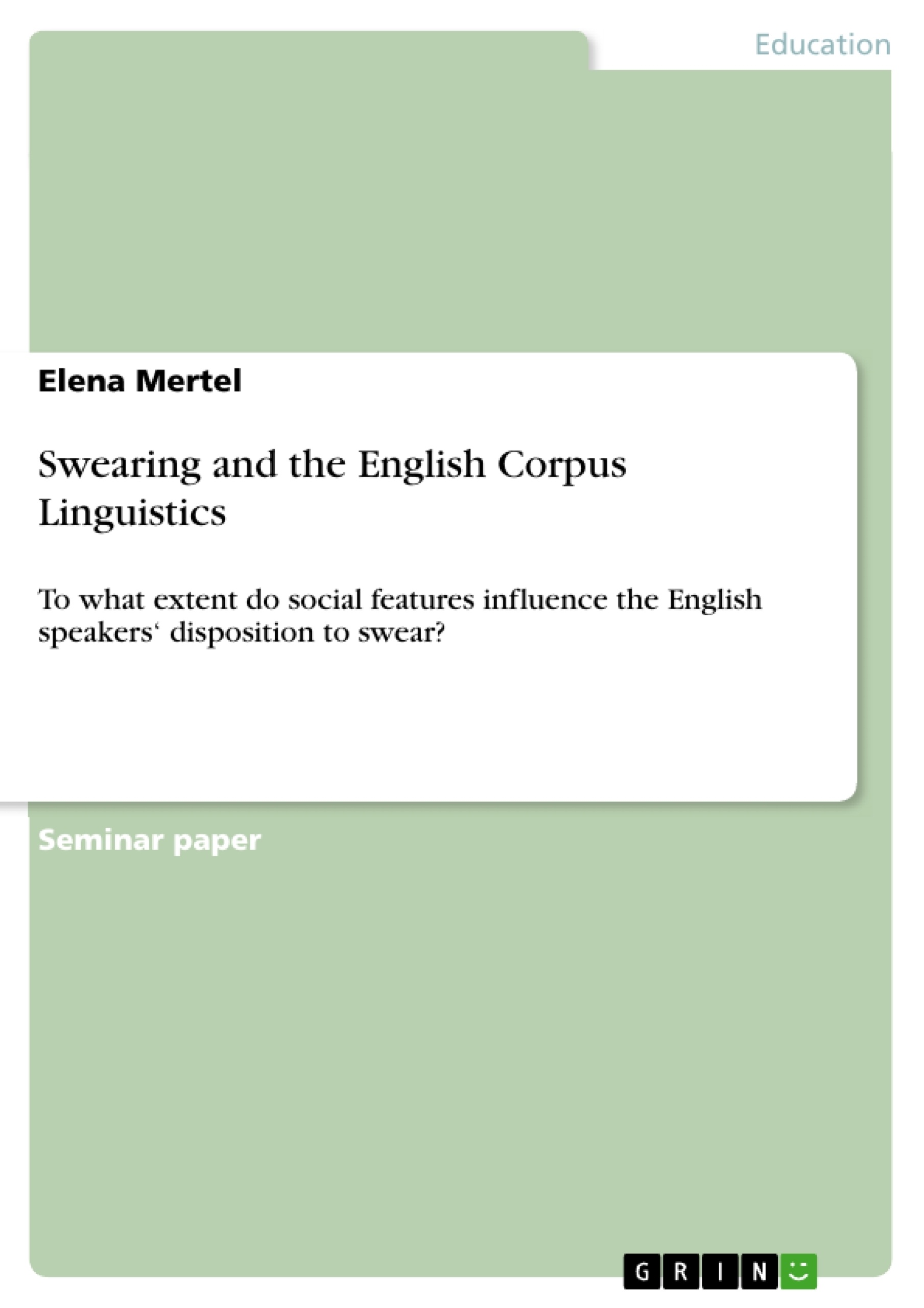This paper aims to examine today's representation of common curse words in a linguistic approach. I will have a look at five frequently used swearwords in the English language and evaluate those due to social features of the speaker and the addressee by using data from the BNCweb corpus.
In addition to that I will either prove or disprove some of the following assumptions made by Timothy Jay and Kristin Janschewitz for the circuit of the BNCweb corpus: “Swearing is influenced by pragmatic (contextual) variables such as the conversational
topic, the speaker-listener relationship, including gender, occupation, and status, and the social-physical setting of the communication with respect to whether the swearing takes place in a public or private location, one’s jurisdiction over the location, and the level of formality of the occasion.”
To narrow this down, I categorize my research in four classes: context, status, gender and additionally age. Finally, I conclude whether the above-mentioned social features influence a native English speaker's disposition to swear.
Content
1.Introduction
1.1 A Brief History of Swearing
1.2 Aim of this Thesis
2. Main part
2.1 Swearing and Context
2.2 Working with The BNCweb Corpus: A Selection of Swearwords
2.2 Swearwords and Status
2.3 Swearwords and Gender
2.4 Swearwords and Age
3. Conclusion
4. Works Cited
5. Appendix
- Quote paper
- Elena Mertel (Author), 2015, Swearing and the English Corpus Linguistics, Munich, GRIN Verlag, https://www.grin.com/document/464320
-

-

-

-
Upload your own papers! Earn money and win an iPhone X. -

-
Upload your own papers! Earn money and win an iPhone X. -

-
Upload your own papers! Earn money and win an iPhone X. -

-
Upload your own papers! Earn money and win an iPhone X. -

-
Upload your own papers! Earn money and win an iPhone X. -

-
Upload your own papers! Earn money and win an iPhone X.

